18th century
Artworks 1 to 10 of 32:
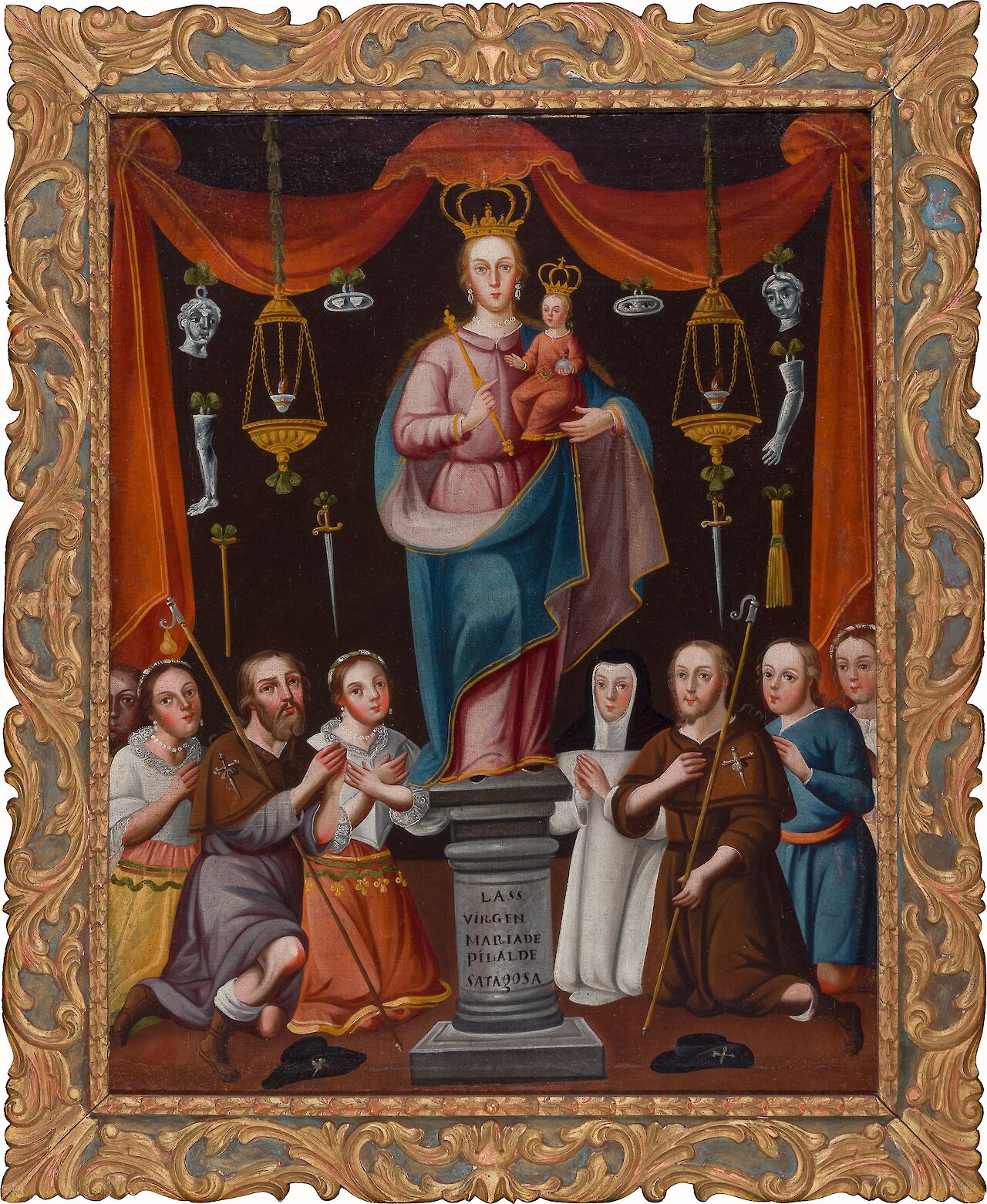
Our Lady of the Pillar
- Medium
- Oil on canvas
- Dimensions
- Unframed: 42 x 31 3/4 in (106.7 x 80.6 cm); framed: 51 x 41 1/2 in (129.5 x 105.4 cm)
- Credits
- San Antonio Museum of Art, Purchased with funds provided by the Ford Motor Company, 2000.19. Image courtesy of the San Antonio Museum of Art; photo by Ansen Seale
- Location
- San Antonio Museum of Art
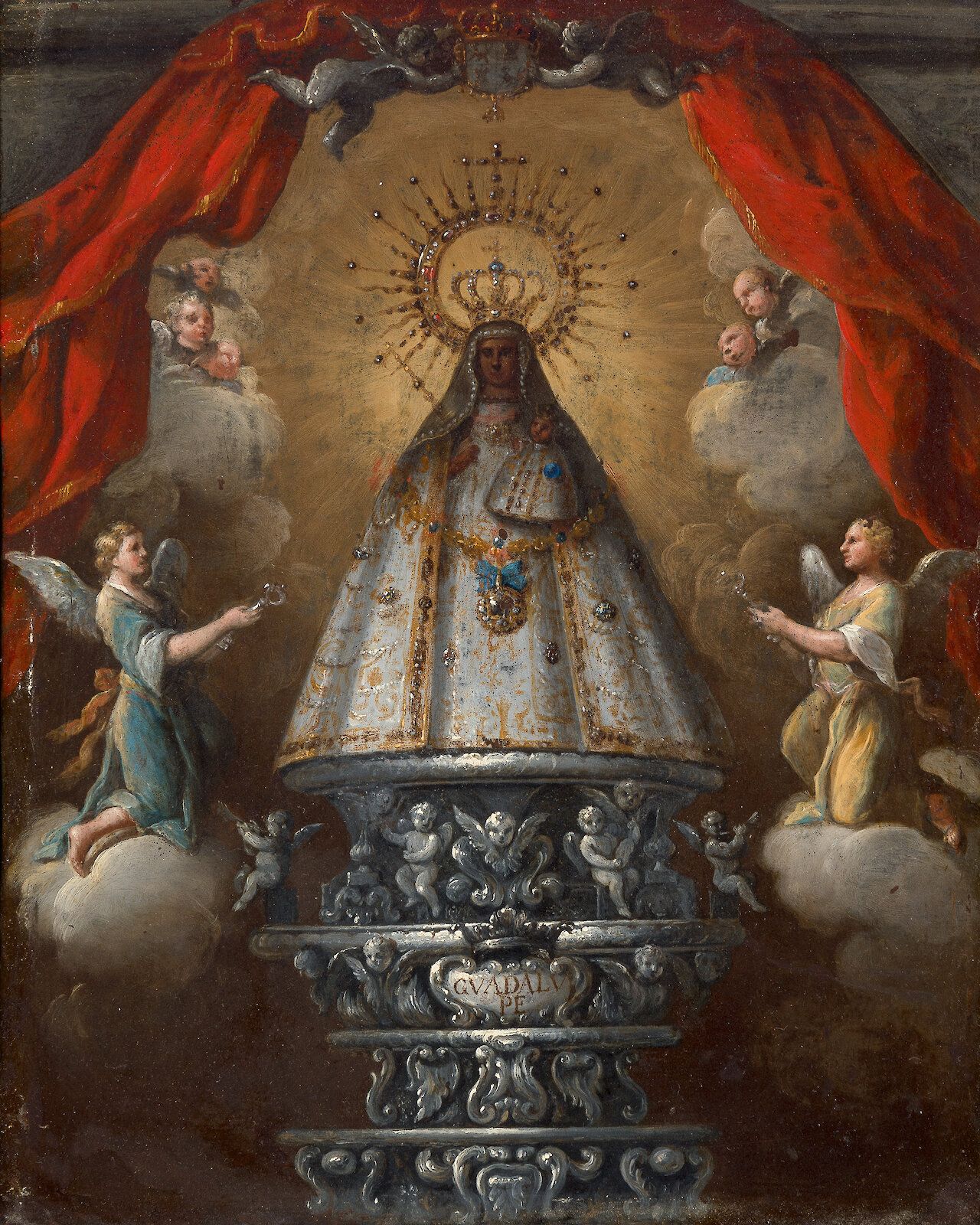
Our Lady of Guadalupe
- Medium
- Oil on copper
- Dimensions
- Unframed: 14 x 11 in (35.6 x 27.9 cm); with frame: 23 1/2 × 20 1/2 × 3 1/2 in (59.7 × 52.1 × 8.9 cm)
- Credits
- San Antonio Museum of Art, Purchased with funds provided by Ford Motor Co., 2000.40. Image courtesy of the San Antonio Museum of Art; photo by Ansen Seale
- Location
- San Antonio Museum of Art
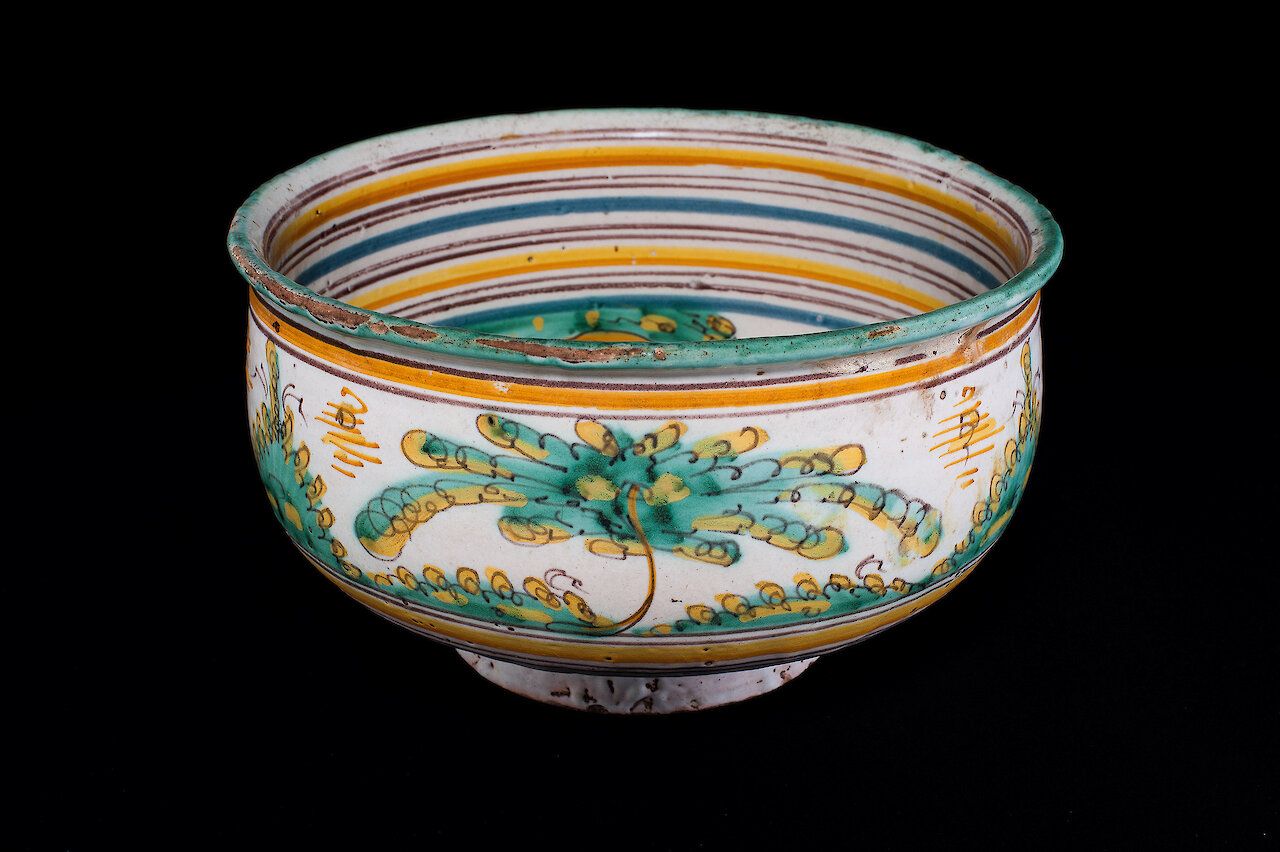
Bowl
- Medium
- Earthenware with tin glaze; copper, cobalt, and iron in-glaze decoration
- Dimensions
- Height: 5 1/2 in (14 cm); diameter: 9 1/2 in (24.1 cm)
- Credits
- San Antonio Museum of Art, Gift of Dr. Ric Bradford, Houston, Texas, 2012.34. Image courtesy of the San Antonio Museum of Art; photo by Peggy Tenison
- Location
- San Antonio Museum of Art
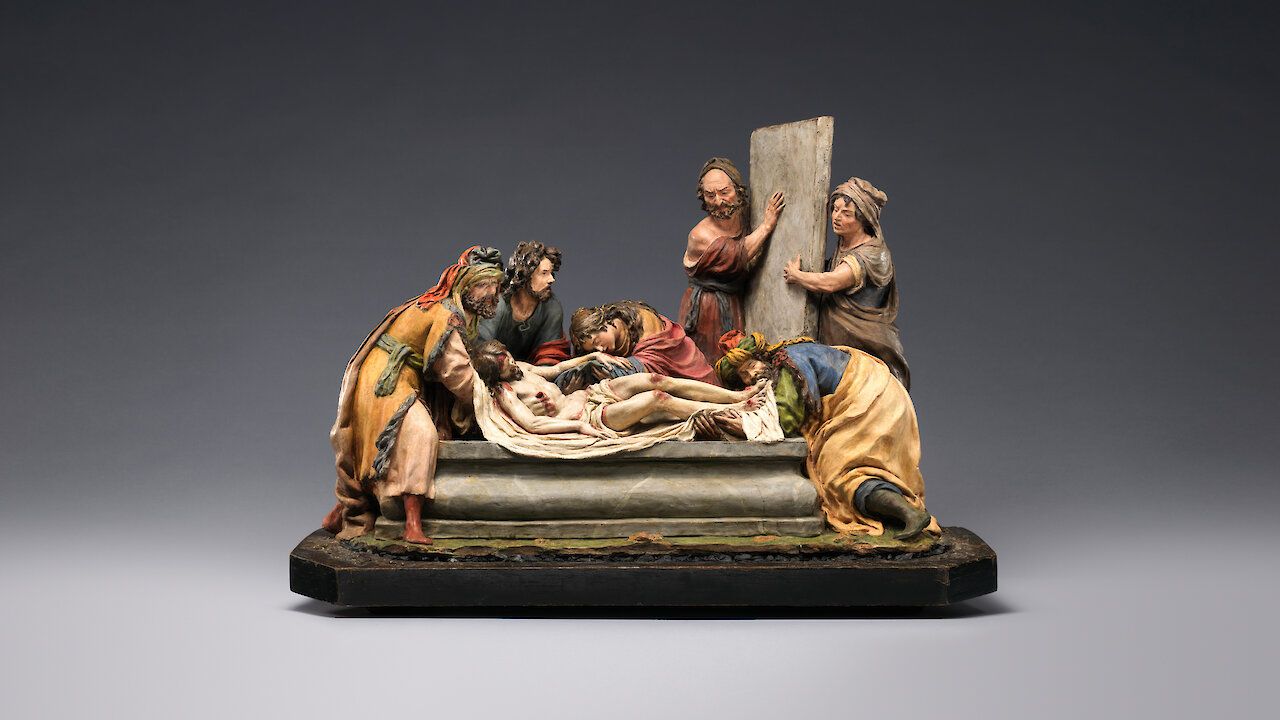
The Entombment of Christ
by Luisa Roldán (La Roldana), circa 1700–1701
- Medium
- Polychrome terracotta
- Dimensions
- Overall: 19 1/2 × 26 × 17 in (49.5 × 66 × 43.2 cm)
- Credits
- Purchase, several members of The Chairman’s Council Gifts, Walter and Leonore Annenberg Acquisitions Endowment Fund, private donors; The Bernard and Audrey Aronson Charitable Trust Gift, in memory of her beloved husband, Bernard Aronson; Anonymous Gift and Louis V. Bell Fund, 2016.
- Location
- The Metropolitan Museum of Art (The Met)
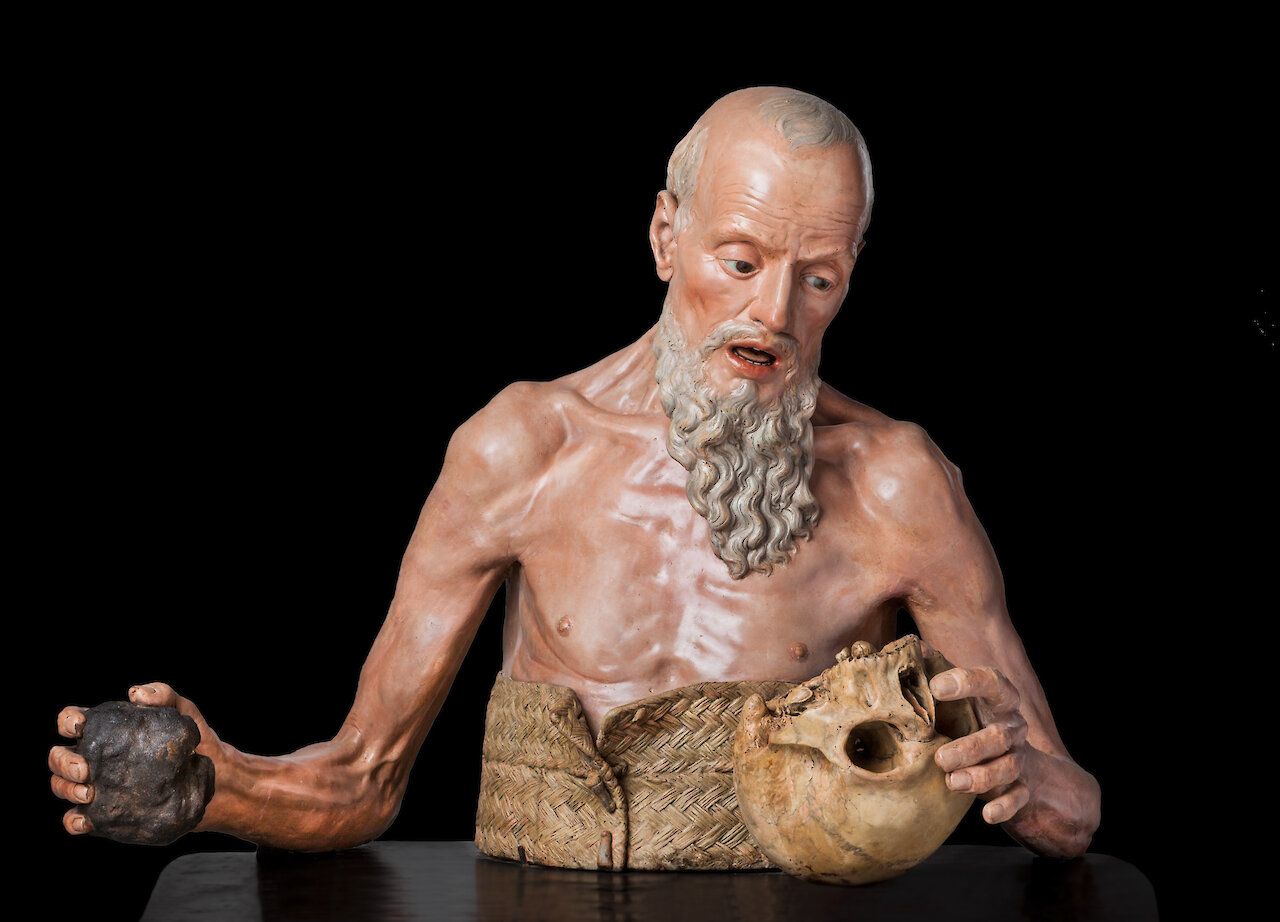
Saint Paul the Hermit
by Juan Alonso Villabrille y Ron, circa 1715
- Medium
- Polychromed terracotta
- Dimensions
- 24 x 30 x 18 1/2 in (61 x 76.2 x 47 cm)
- Credits
- Meadows Museum, SMU, Dallas. Museum purchase thanks to a gift from Jo Ann Geurin Thetford in Honor of Dr. Luis Martín, MM.2013.01. Photography by Dimitris Skliris.
- Location
- Meadows Museum
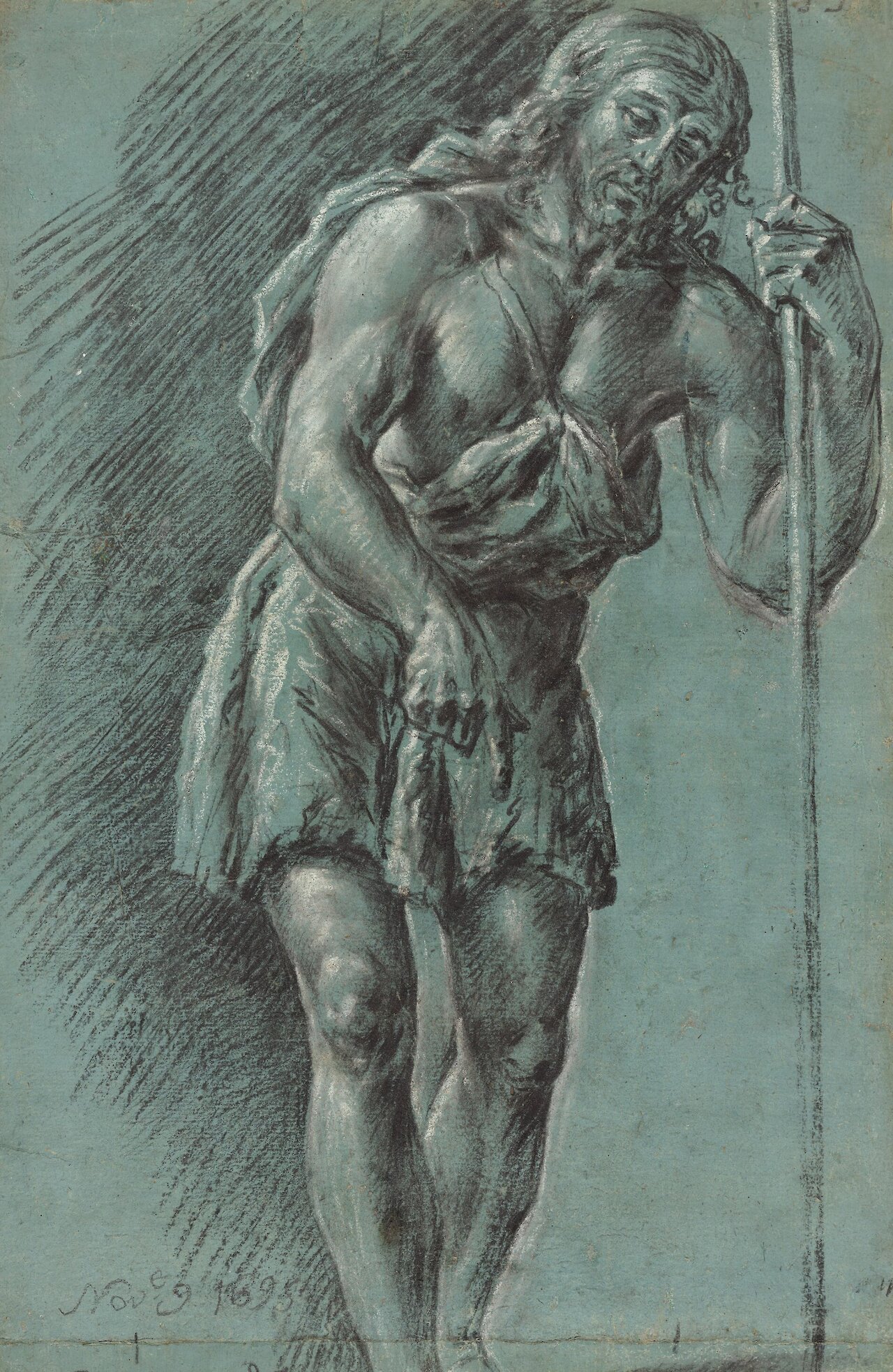
Saint John the Baptist
by Anonymous / Unknown, circa 1740
- Medium
- Charcoal, heightened with opaque white watercolor
- Dimensions
- 43 × 26.9 cm (16 15/16 × 10 9/16 in)
- Credits
- Purchased with funds provided by the Disegno Group.
- Notes
After Juan Conchillos Falcó (Spanish, 1641-1711). On striking blue prepared paper, this academic figure study is posed as Saint John the Baptist. Seen from below, suggesting that the model stood on a raised platform, the saint looms large. The artist modeled his figure using the blue as a middle tone. Charcoal and white watercolor forcefully articulate the anatomical form of the saint, and convey his powerful presence. The saint's musculature is dramatically portrayed in gritty black lines built up in bold succession. The summary treatment of the drapery, executed in broad, jagged strokes, gives the saint's clothing an abstract quality that reiterates the drawing's primary purpose as a study of the male body. On close examination, the charcoal's rough texture reflects glints of light, creating a seamless marriage between medium, technique, and subject.
- Location
- J. Paul Getty Museum
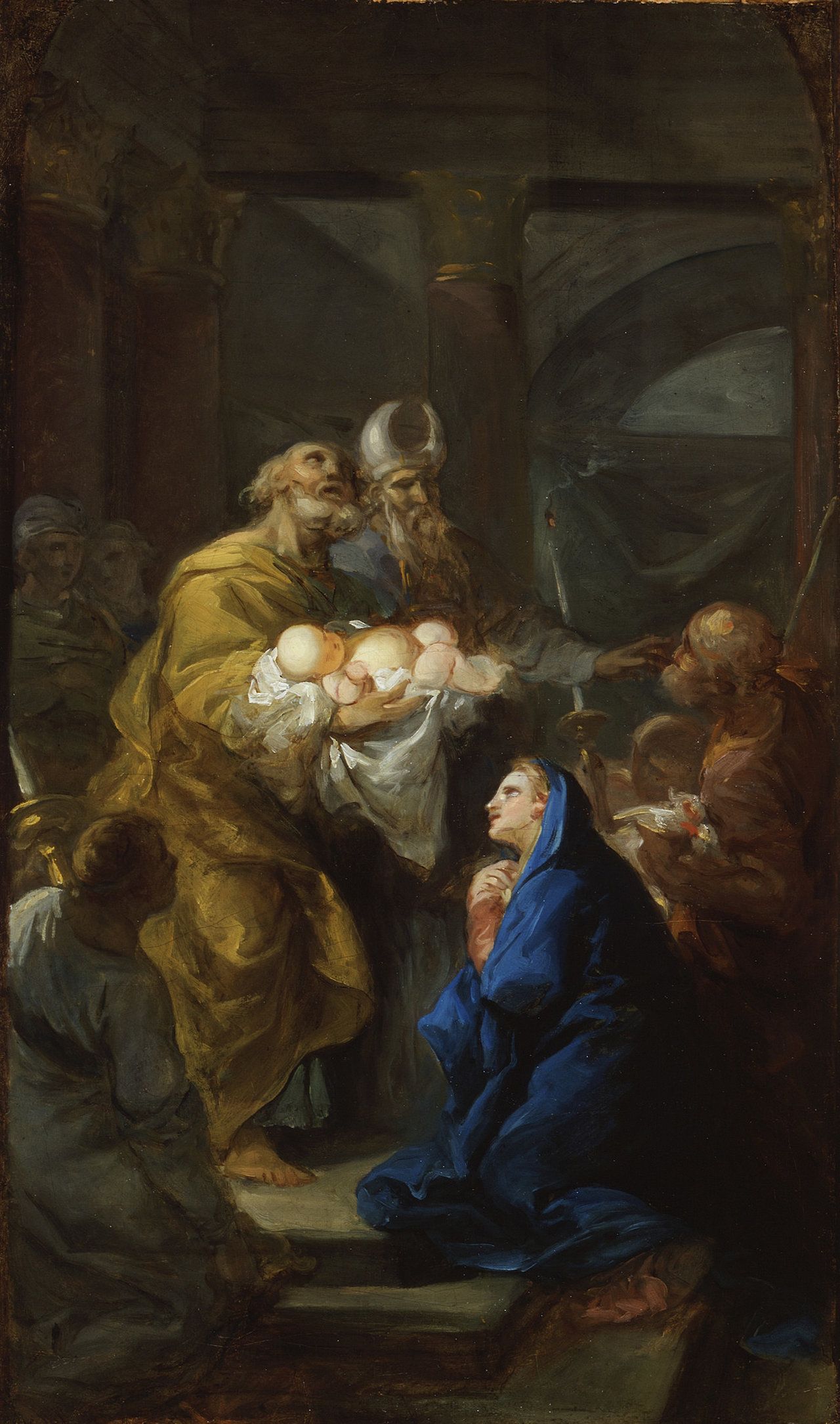
Presentation of Christ in the Temple
by Vicente López y Portaña, circa 1745–1746
- Medium
- Oil on canvas
- Dimensions
- 22 × 15 in (55.88 × 38.1 cm)
- Location
- LACMA
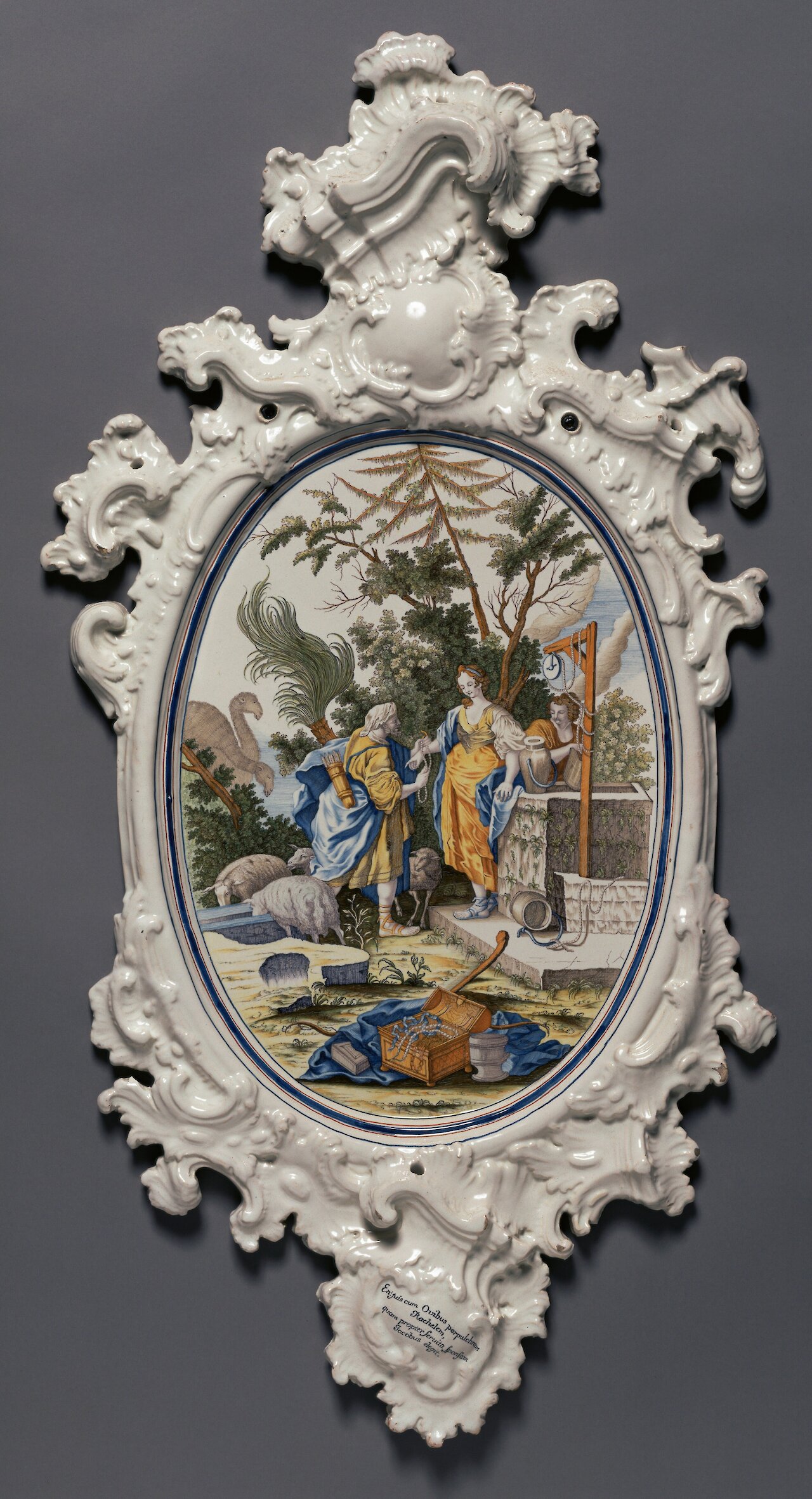
Plaque depicting Jacob choosing Rachel to be his Bride
by Alcora Ceramic Factory, circa 1755
- Medium
- Faïence (tin-glazed earthenware)
- Dimensions
- Object (height x width): 94 × 47.6 cm (37 × 18 3/4 in)
- Notes
Clad in complementary yellow and blue, a young man and woman coyly eye each other, their hands meeting at the very center of the scene. Lively, overflowing foliage serves as a dramatic and fitting backdrop to this courtship. At the base of the plaque, an inscription in Latin that identifies the pair translates as: Behold the very beautiful Rachel with her sheep, whom Jacob chooses as his wife.
After painting by Jacopo Amigoni (Italian, 1682-1752). Despite the inscription, the scene also includes several details from the biblical account of Rebecca and Eliezer at the well. The jar balanced on the well, the flamingolike camels in the background, and the jewel-laden chest in the foreground are elements of this story. The plaque is based on a mid-seventeenth century image of Rebecca and Eliezer by Jacopo Amigoni, whose paintings and engravings often served as a model for the decoration of plaques and tapestries. It is likely that the painter of the plaque had a print of Amigoni's work in hand but transformed it into the more amorous Jacob and Rachel subject, probably for a specific patron.
- Location
- J. Paul Getty Museum
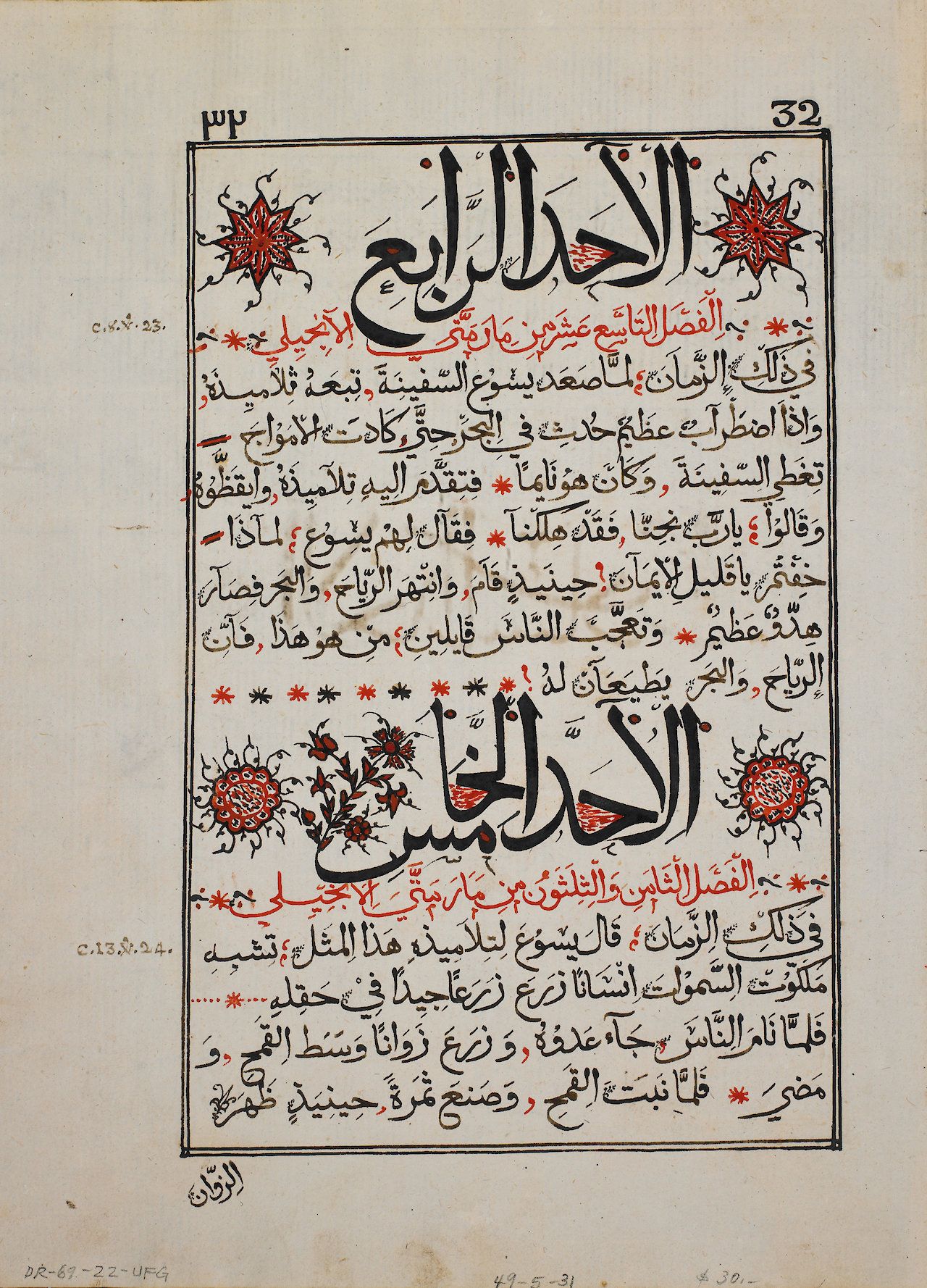
Christian Gospels in Arabic for Sundays and Feast Day
by Francisco Canes, 1758
- Medium
- Hand painted manuscript
- Dimensions
- 10 1/2 x 7 3/4 in. (26.7 x 19.7 cm)
- Location
- Harn Museum of Art
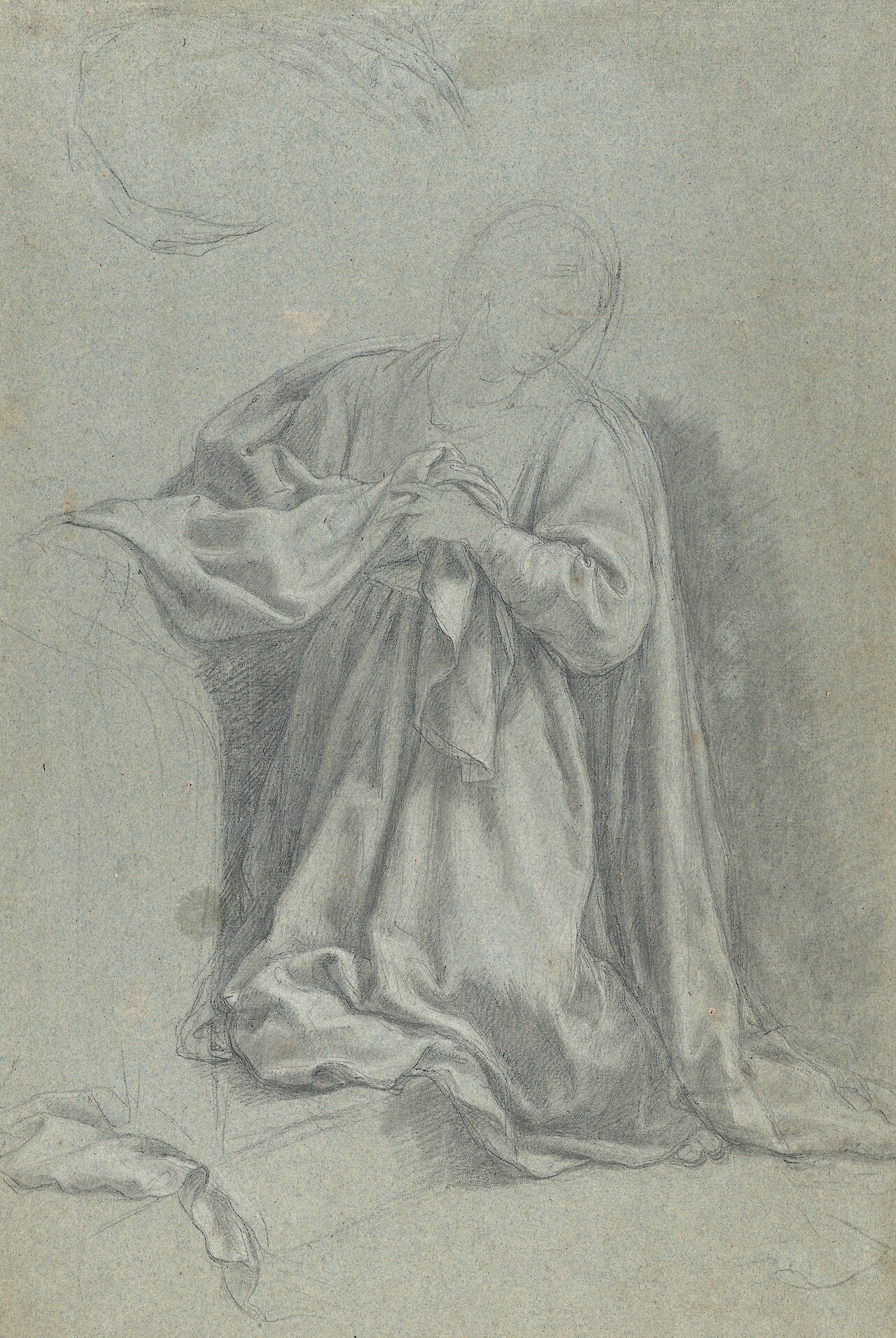
The Virgin Annunciate (recto); Sketch of a Figure (verso)
by Francisco Bayeu y Subias, circa 1769
- Medium
- Black chalk with touches of white (recto); black chalk (verso)
- Dimensions
- 47 × 31.5 cm (18 1/2 × 12 3/8 in)
- Location
- J. Paul Getty Museum